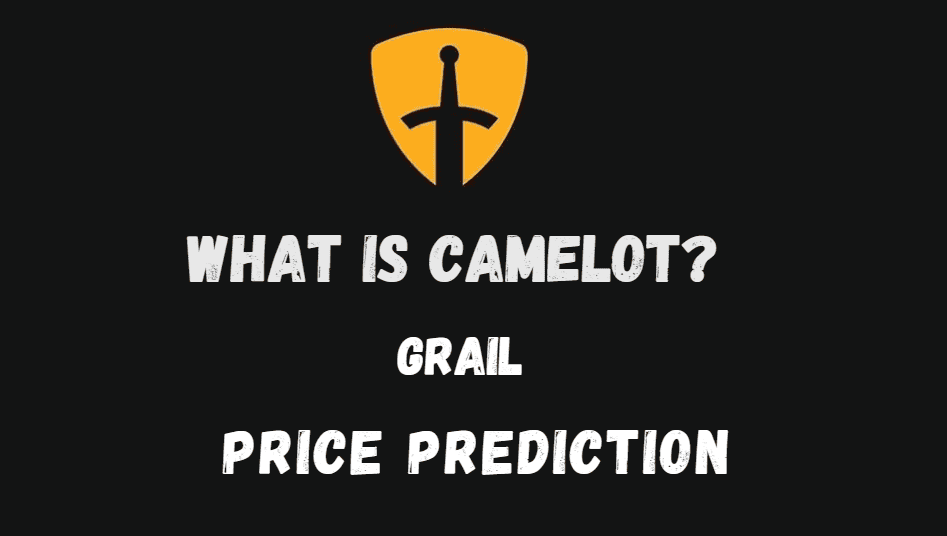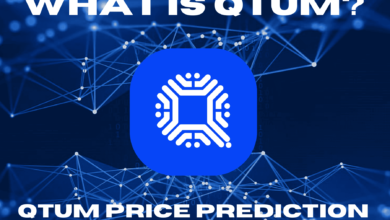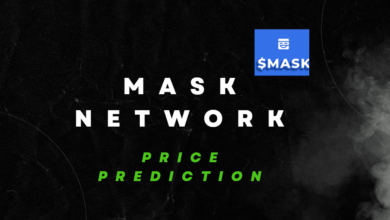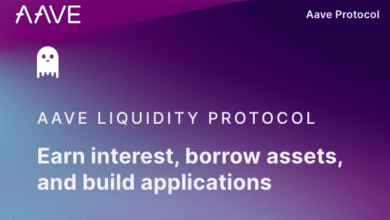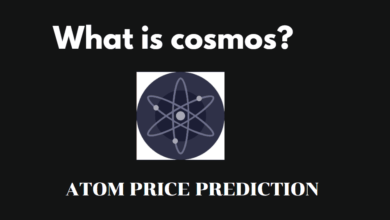What is Camelot? GRAIL Price Prediction 2025, 2026 to 2030
Camelot is gaining attention on Arbitrum ecosystem, and its native token GRAIL is topping the charts every day. In this post we are going to talk about what is Camelot and what makes it different from other decentralised exchanges, why is it the talk of the town. We will also explore the tokenomics of Camelot, examine current market trends, and provide a price prediction for GRAIL from 2025 to 2030.
What is Camelot?
Camelot is a decentralized exchange (DEX) and a launchpad developed on Arbitrum, which is community-driven and focused on ecosystem enhancement. Camelot is used by projects to raise funds through a fair auction.
Its protocol is highly customizable, emphasizing composability and flexibility for liquidity provision. The team’s objective is to strengthen the Arbitrum ecosystem by offering innovative features that promote control and sustainability over liquidity.
Camelot’s dual automated market maker (AMM) is a notable aspect of the platform, as it supports both volatile (UniV2) and stable (Curve-like) swaps. The protocol’s innovative AMM also allows for dynamic directional fees, permitting different fees to be set for each pool and direction of swap. These unique features enable the creation of more tailored pool configurations to suit specific trading pairs.
About GRAIL
| Parameter | Description |
|---|---|
| Camelot Website | Camelot.exchange |
| Token | GRAIL |
| Tags | DEX, Launchpad, Arbitrum ecosystem |
| Explorers | Arbitrum Ecosystem, Camelot Token |
| Camelot Price (GRAIL) | $463.04 |
| Arbitrum Address | 0x3d9907f9a368ad0a51be60f7da3b97cf940982d8 |
| Market Cap | $9,194,615 |
| Fully Diluted Market Cap | $38,718,403 |
| Best exchange to buy GRAIL |
Uniswap, Bitget, MEXC |
How is Camelot Different from other Decentralised Exchanges?
Camelot’s next-generation yield and incentives system is another noteworthy feature, as it incorporates non-fungible staked positions in addition to the standard LP tokens. These positions generate yield, enhance capital efficiency, and provide adaptable staking strategies that can be reused both inside and outside the protocol.
Camelot places a strong emphasis on permissionless interactions, enabling projects to directly engage with the protocol without intervention from the team. Nitro Pools afford projects complete control over their incentives and the flexibility to create tailored liquidity solutions. The custom launchpads are also fully permissionless, empowering all projects to bootstrap their token launches and liquidity in a decentralized, community-driven manner.
Camelot’s long-term sustainability is reflected in its tokenomics, which feature a dual token system. The native GRAIL and its escrowed counterpart xGRAIL, a non-transferable governance token, serve as farming rewards. xGRAIL receives the majority of emissions, giving control over supply flow.
The earnings of the protocol are utilized to provide actual yield to xGRAIL holders and also to perform buybacks and burns, which help in keeping a buy pressure on the platform’s native token, GRAIL.
What is GRAIL and xGRAIL token?
Grail Token (GRAIL) is the native cryptocurrency of Camelot, an Arbitrum-based platform. Users can obtain GRAIL as yield rewards by participating in incentivized staking positions. Xgrail Token (xGRAIL) is a governance token (non-transferable) that corresponds to staked GRAIL and can be earned through spNFTs (yield-generating staking positions) or directly converting to GRAIL. The primary use case for xGRAIL is to allocate it to Plugins, which provide various benefits. Both GRAIL and xGRAIL are interchangeable with each other.
Benefits of xGrail
To benefit from its perks, users can allocate their xGRAIL to plugins, but while it’s allocated, it can’t be used for anything else. Users can also redeem xGRAIL for GRAIL, but the process involves vesting, which users can select the duration of. xGRAIL can be used for governance, with more xGRAIL equating to more voting power.
Camelot has implemented deflationary measures to reduce GRAIL’s total supply, such as buyback & burn, xGRAIL redeems, and xGRAIL deallocations, in addition to the hardcap on GRAIL.
Should you hold Grail and XGrail?
By holding GRAIL and xGRAIL tokens, users can earn yield rewards, allocate xGRAIL to Plugins for benefits, and participate in governance via voting power. Nevertheless, users must also consider the vesting period and deflationary measures established in the tokenomics.
Camelot’s native token on the Arbitrum chain is called Grail, and its maximum supply is 100,000 tokens. Yield rewards can be earned on incentivized staking positions with Grail. xGrail, a non-transferable governance token, is earned from yield-generating staking positions (spNFTs) or direct Grail conversion, corresponding to staked Grail. The primary use of xGrail is to allocate it to Plugins, which requires staking xGrail in the token contract and assigning the deposited amount to a plugin for various benefits.
Grail and xGrail tokens employ various deflationary measures to decrease the overall supply. For instance, some Grail tokens are reserved for buyback and burn, continuously raising the buying pressure. When xGrail is redeemed with a vesting period shorter than the maximum, excess Grail is burned. Also, when users deallocate xGrail from a plugin, a deallocation tax is imposed, and the corresponding Grail amount is destroyed.
Users who hold xGrail tokens have governance capabilities, allowing them to vote on official proposals, with the number of xGrail tokens held representing their voting power. Additionally, users can allocate their xGrail tokens to any plugin to access its benefits, but once allocated and deposited, xGrail cannot be used for other purposes. When users redeem xGrail, 50% of its value is automatically allocated to the dividends plugin, and the remaining 50% can be allocated to any plugin at the user’s discretion.
In general, the tokenomics of Grail and xGrail aim to encourage staking and involvement in the Camelot ecosystem, as well as to provide advantages to token holders and gradually decrease the token supply.
GRAIL Price Prediction 2025 to 2030
GRAIL Price Prediction 2025
| When | Maximum Price | Minimum Price |
| April 2025 | $624.991 | $271.735 |
| May 2025 | $762.184 | $614.665 |
| June 2025 | $805.400 | $578.803 |
| July 2025 | $821.964 | $662.874 |
| August 2025 | $838.403 | $598.859 |
| September 2025 | $698.669 | $563.443 |
| October 2025 | $1,013.070 | $723.622 |
| November 2025 | $1,367.645 | $1,102.939 |
| December 2025 | $1,791.615 | $1,279.725 |
As we move into 2025, GRAIL is anticipated to witness significant price fluctuations. As we approach April 2025, GRAIL is expected to have a maximum price of $624.991 and a minimum price of $271.735. Moving towards December 2025, GRAIL is projected to rise, with a maximum value reaching $1,791.615 and a minimum of $1,279.725.
GRAIL Price Prediction 2026
| When | Maximum Price | Minimum Price |
| January 2026 | $2,239.518 | $1,806.063 |
| February 2026 | $1,599.656 | $1,142.611 |
| March 2026 | $1,230.505 | $992.342 |
| April 2026 | $911.485 | $651.061 |
| May 2026 | $651.061 | $525.049 |
| June 2026 | $781.273 | $558.052 |
| July 2026 | $645.680 | $520.710 |
| August 2026 | $576.933 | $404.022 |
| September 2026 | $469.585 | $378.698 |
| October 2026 | $586.982 | $419.273 |
| November 2026 | $645.680 | $520.710 |
| December 2026 | $576.500 | $411.786 |
As we step into 2026, GRAIL is anticipated to experience notable price movements. As we approach January 2026, GRAIL is expected to have a maximum price of $2,239.518 and a minimum price of $1,806.063. Moving towards December 2026, GRAIL is projected to fluctuate, with a maximum value reaching $576.500 and a minimum of $411.786.
Grail Price Prediction 2027
| When | Maximum Price | Minimum Price |
| January 2027 | $634.150 | $511.411 |
| February 2027 | $722.921 | $527.500 |
| March 2027 | $691.800 | $557.903 |
| April 2027 | $760.980 | $543.557 |
| May 2027 | $837.078 | $675.063 |
| June 2027 | $643.906 | $459.933 |
| July 2027 | $515.125 | $415.423 |
| August 2027 | $399.322 | $285.230 |
| September 2027 | $499.152 | $402.542 |
| October 2027 | $623.940 | $445.671 |
| November 2027 | $686.334 | $553.495 |
| December 2027 | $768.694 | $549.067 |
GRAIL Price Prediction 2028 to 2030
| When | Maximum Price | Minimum Price |
| January 2028 | $845.563 | $681.906 |
| February 2028 | $736.055 | $532.522 |
| March 2028 | $691.825 | $557.923 |
| April 2028 | $761.007 | $543.577 |
| May 2028 | $639.246 | $515.521 |
| June 2028 | $581.133 | $415.095 |
| July 2028 | $726.416 | $585.819 |
| August 2028 | $937.077 | $669.340 |
| September 2028 | $1,124.492 | $906.848 |
| October 2028 | $1,022.265 | $730.189 |
| November 2028 | $1,032.488 | $832.652 |
| December 2028 | $1,156.387 | $825.990 |
| January 2029 | $1,042.711 | $840.896 |
| February 2029 | $1,226.718 | $876.227 |
| March 2029 | $1,349.390 | $1,088.218 |
| April 2029 | $1,606.417 | $1,147.441 |
| May 2029 | $1,746.105 | $1,408.149 |
| June 2029 | $1,920.716 | $1,371.940 |
| July 2029 | $1,829.253 | $1,475.204 |
| August 2029 | $1,524.378 | $1,088.841 |
| September 2029 | $1,539.621 | $1,241.630 |
| October 2029 | $1,924.527 | $1,374.662 |
| November 2029 | $1,963.017 | $1,583.078 |
| December 2029 | $2,002.278 | $1,430.198 |
| January 2030 | $2,116.979 | $1,707.242 |
| February 2030 | $2,328.677 | $1,663.341 |
| March 2030 | $2,239.113 | $1,805.736 |
| April 2030 | $1,865.927 | $1,332.805 |
| May 2030 | $1,903.246 | $1,534.876 |
| June 2030 | $1,730.224 | $1,235.874 |
| July 2030 | $2,249.291 | $1,813.944 |
| August 2030 | $2,271.784 | $1,622.703 |
| September 2030 | $1,903.246 | $1,534.876 |
| October 2030 | $2,283.895 | $1,631.354 |
| November 2030 | $2,175.138 | $1,754.144 |
| December 2030 | $1,977.398 | $1,412.427 |
In 2028, GRAIL Token is expected to reach a maximum price of $1,156.387 and a minimum price of $415.095. In 2029, GRAIL Token is projected to see further growth, with a maximum price of $2,002.278 and a minimum of $840.896. As we step into 2030, GRAIL Token is anticipated to fluctuate between a maximum of $2,328.677 and a minimum of $1,235.874.
GRAIL Price Prediction Summary 2026-2030 in INR
| When | Maximum Price | Minimum Price |
| 2026 | ₹191,552.69 | ₹32,391.18 |
| 2027 | ₹71,597.79 | ₹24,396.58 |
| 2028 | ₹98,909.25 | ₹35,504.32 |
| 2029 | ₹171,260.84 | ₹71,924.36 |
| 2030 | ₹199,178.73 | ₹105,708.01 |
As we move into 2026, GRAIL Token is expected to reach a maximum price of ₹191,552.69 and a minimum price of ₹32,391.18. In 2027, GRAIL Token is projected to fluctuate between a maximum of ₹71,597.79 and a minimum of ₹24,396.58. As we step into 2028, GRAIL Token is anticipated to have a maximum of ₹98,909.25 and a minimum of ₹35,504.32. Moving into 2029, GRAIL Token is expected to rise, reaching a maximum of ₹171,260.84 and a minimum of ₹71,924.36. As we approach 2030, GRAIL Token is projected to trade between a maximum of ₹199,178.73 and a minimum of ₹105,708.01.
FAQs
What are some common use cases for Grail and xGrail within the broader Arbitrum ecosystem, and how might these use cases evolve over time?
Grail and xGrail are two components within the Arbitrum ecosystem that enable various use cases, including:
Gasless transactions
Grail allows users to make transactions without paying gas fees by using off-chain state channels.
Cross-chain interoperability
xGrail enables communication between different blockchains and facilitates the movement of assets between them.
Decentralized finance (DeFi)
Arbitrum supports various DeFi applications, such as decentralized exchanges, yield farming, and lending protocols, which can benefit from the increased scalability and reduced gas fees provided by Grail and xGrail.
Over time, the use cases for Grail and xGrail may evolve as the broader blockchain ecosystem continues to develop. For example, as more applications are built on Arbitrum, Grail may become more widely used for gasless transactions. Additionally, as the adoption of blockchain technology increases, xGrail may become more important for facilitating cross-chain communication between different networks.
Who are the team members of Camelot?
Team is anonymous. We do not know who is behind Camelot exchange.
What is GRAIL’s price prediction for 2025?
GRAIL’s price prediction for 2025 suggest it could be trading in between $271.735 and $1,791.615 in 2025.
What is GRAIL’s price prediction for 2030?
Minimum and maximum price prediction of GRAIL for 2030 is $1,235.874 and $2,328.677 respectively.
Can GRAIL reach 50000USD?
As per our price prediction, GRAIL may reach 50,000USD in 2045 or 2055.
Read:
Conclusion: Is Grail a good investment in 2025?
Camelot is the next generation fund raising platform and a decentralised exchange. It is currently one of the most trending projects in the Arbitrum ecosystem. With it having a deflationary nature, the token could do well. And holding GRAIL in this case may be very beneficial. You would also be airdropped tokens of new projects when they would be launching in this platform. Holding GRAIL will let you participate in those fundraising.
However, like other IDO platform tokens, the price may fall later, so my advice would be to not go all in. You may invest upto 0.2% of your portfolio in this altcoin.
Are you following Camelot and other Arbitrum projects? What is your price prediction for GRAIL? Do share with us in comments.
Disclaimer: This article on GRAIL price prediction from 2025 to 2030 is for educational analysis only and not a financial advice. Please use the information and data for educational purpose only.
